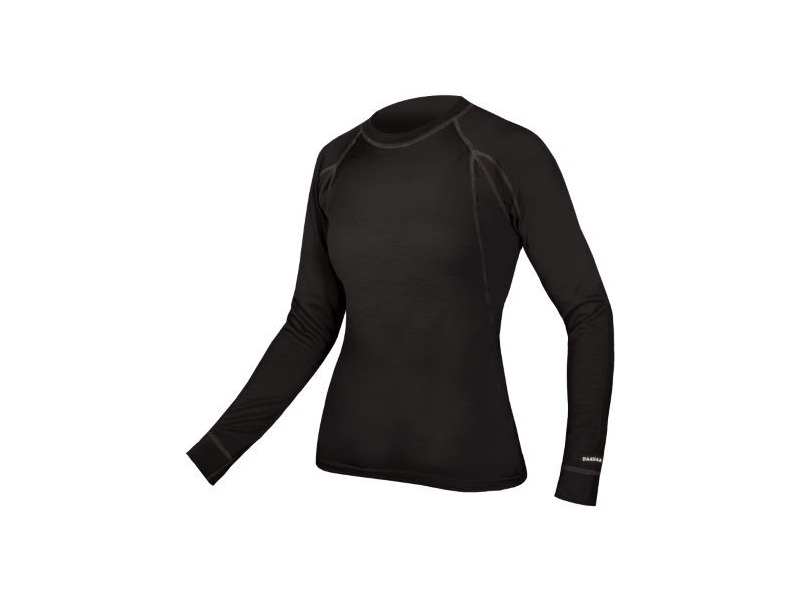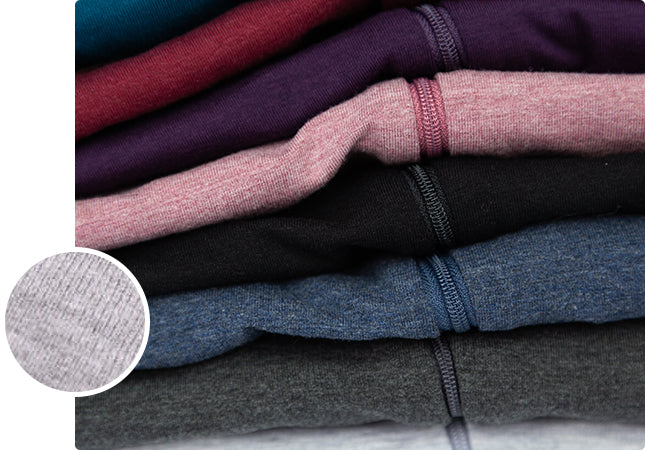What Makes Yak Merino Wool Base Layers So Effective For Winter Sports Clothing In Terms Of Warmth/Temperature Regulation? Moisture Management. Comfort. Durability.
Yak merino layer base layers are the best choice for winter sports apparel. They stand out because of a mix of factors that increase warmth and temperature regulation.
Insulating Properties - Yak and merino both possess natural insulation properties. Yak, with its hollow filaments, traps the air, which provides excellent warmth. Merino wool, with its hollow fibers, is known for being a excellent insulator.
Controls body temperature - The fabric is breathable, and helps regulate the body's temperature by retaining heat in cold weather conditions.
Moisture Management-
Merino is a moisture-wicking yarn. The properties of Merino draw out moisture and disperse it, which helps prevent sweat accumulation. Yakwool is also a great way to transport moisture. It keeps the wearer dry and comfortable while engaging in intense physical activity.
Comfort-
Softness- Merino wool is renowned for its fine, soft fibers, which are gentle on skin, and less likely to cause irritation. Adding yak fibers to the mix, which are also soft, enhances comfort.
Odor Resistance - Both types of Wool have natural antimicrobial qualities, which reduces the growth and spread of bacteria that cause odors. This helps keep the clothing fresh.
Durability-
Strength and Resilience- Yak wool is inherently durable, and when combined with the tenacity of Merino wool, the material is strong and resistant to wear and tear, which makes it ideal for demanding activities.
Natural Fiber Benefits-
Renewability - Merino and Yak Wool are renewable and biodegradable fibres making them environmentally friendly.
These wools have a natural versatility that allows the use of these wools in varying weather conditions.
The blend of yak and merino makes use of the strengths of each material, creating an excellent fabric for providing warmth and regulating temperature, as well as managing humidity, providing comfort and providing toughness. This makes yak merino wool base layers very effective in winter sports clothing, catering to the requirements of winter sports in cold weather, and keeping the wearer comfortable and dry. See the recommended visit website for merino wool base layer for more info including wool base layer womens, smartwool 250, wool thermal base layer, snow base layers, wool base layer, ski base layer womens, best wool base layer, merino wool long underwear mens, smartwool merino 250 base layer, best wool base layer and more.

What Are The Benefits Of Bamboo Clothing In Regards To Thermal Regulation, Uv Protection, Biodegradability And Environmental Impact?
Thermal Regulation-
Bamboo fabric for insulation is breathable and has thermal-regulating properties. It is warm even in frigid temperatures. It aids in regulating body temperature by holding heat in cooler conditions and allowing ventilation to prevent excessive sweating during physical exercise.
UV Protection
Bamboo fabric is naturally resistant to harmful UV rayons. It is able to block a large part of sun's ultraviolet rays, providing an additional layer of protection against the sun's rays when outside.
Biodegradability-
Biodegradable bamboo clothing is broken down organically at end its lifecycle without leaving toxic leftovers. Additionally, it does not contribute to the creation of pollution. This reduces waste, and the environmental impact of clothes that are thrown away.
Environmental Impact-
Sustainable Bamboo- Bamboo is extremely durable as a raw material. It can grow rapidly and abundantly, without pesticides or chemical fertilisers. This reduces the environmental impact of cultivating it. It's a renewable resource because of its speedy expansion.
Bamboo makes use of less water when compared with other crops like cotton. This makes it a more efficient use of water. This contributes to water conservation and eases pressure on resources.
Soil Conservation
Soil health- Bamboo cultivation doesn't reduce soil nutrients and does not require extensive irrigation. This improves soil conditions and lessens the need for harmful farming practices.
Carbon Sequestration
Bamboo's carbon absorption capacity is impressive. Bamboo has the capacity to absorb and release CO2 more effectively than other plants. This property contributes to efforts to fight climate change through reducing carbon emissions.
Bamboo clothing's benefits include thermal regulation in addition to UV protection and biodegradability. Bamboo is also an ideal choice for people who are looking for clothing that is sustainable. These qualities align with eco-friendly practices, offering benefits for both the wearer as well as the environment. Take a look at the top bamboo clothing for blog info including dixxon bamboo shirt, bamboo hoodie women's, bamboo t shirts womens, bamboo yoga trousers, bamboo undergarments, cozy earth clothes, bamboo tee shirts mens, bamboo trousers mens, bamboo dress socks, bamboo baby clothes and more.

What Are The Differences Between Merino And Bamboo Clothes Differ From Eachother And Regular Wool?
Merino Wool Bamboo Clothing, Regular Wool possess distinct characteristics that make them distinct.
Softness- Merino is known for its fine soft fibers that make it easy to wear. It's less likely that it causes irritation or itching in comparison to other kinds of wool.
Merino wool is excellent at absorption of moisture, allowing it to evaporate. This keeps the wearer comfortably cool.
Merino Wool is an excellent insulation and can provide warmth even in wet conditions. It regulates body temperature and provides warmth in cold temperatures and breathability to avoid overheating during activity.
Odor Resistant - It stops the development and spread of odor-causing bacteria, so garments stay fresher for a longer time.
Bamboo Clothing
Softness- Bamboo clothing's silky appearance is often compared to cashmere or silk. Bamboo clothing is gentle on the skin, giving a luxurious feel.
Bamboo fabric is a moisture-wicking fabric that pull moisture away from your body, keeping you dry while exercising.
Temperature Regulation- Bamboo clothing has natural temperature-regulating abilities, offering warmth in winter and breathability to prevent overheating.
Sustainability - Bamboo is a resource that is highly renewable, and it grows quickly without pesticides. Bamboo is biodegradable and has a minimal impact on the environment.
Wool Regular
Texture - The texture of traditional wool may differ with some wools being more coarse than others, and more likely to trigger itching or discomfort.
Warmth- Regular Wool provides an excellent insulation, as well as warmth, but it may feel large and heavy at times.
Moisture Absorption - Wool can absorb moisture, making it less effective in moisture-wicking compared to merino wool or bamboo fabric. However, it retains warmth even if it is damp.
In short, merino wool provides a soft, supple feel, great moisture-wicking, odor resistance, and insulation. Bamboo clothing is a luxurious airy feel. Also, it regulates temperature and is eco-friendly. Regular wool differs in its texture. It may not be as soft, or have the same moisture wicking ability like bamboo and merino, however, it provides warmth. Each material caters to different preferences, and each has unique benefits. View the top rated merino winter clothings recommendations for website examples including best ski underlayers, smartwool mid layer, womens icebreaker base layer, wool base layer womens, cheap merino winter clothing, best long underwear for skiing, ski layers womens, best merino wool base layer women's, icebreaker baselayer, smartwool merino 250 base layer and more.
 |


 新浪微博
新浪微博 QQ空间
QQ空间 人人网
人人网 腾讯微博
腾讯微博 Facebook
Facebook Google+
Google+ Plurk
Plurk Twitter
Twitter Line
Line








